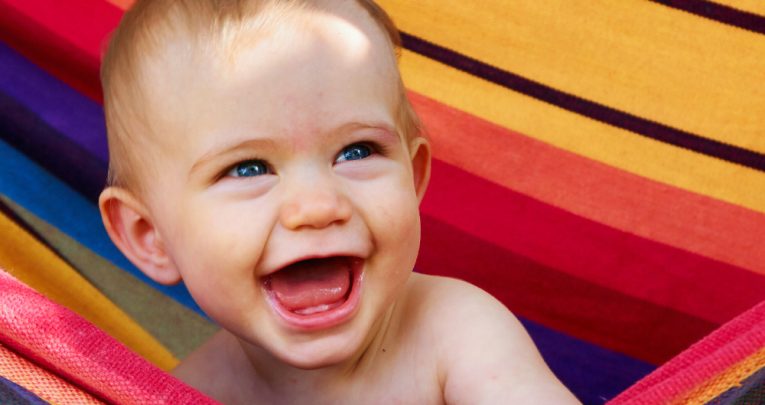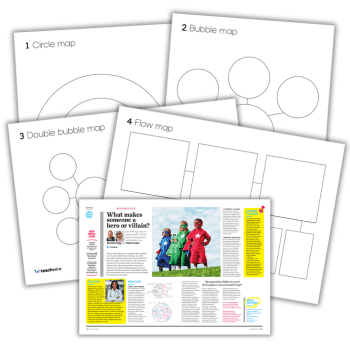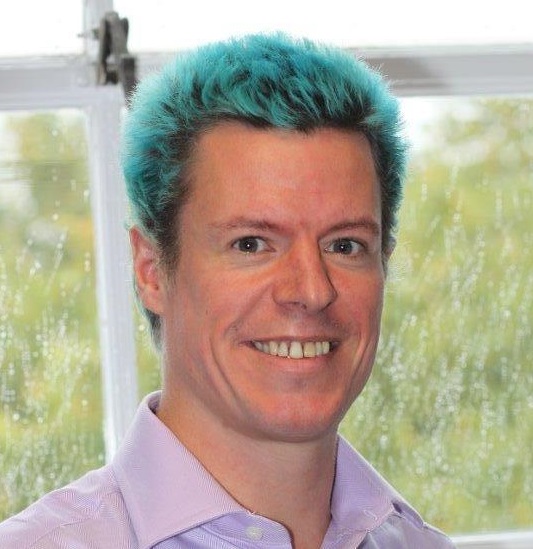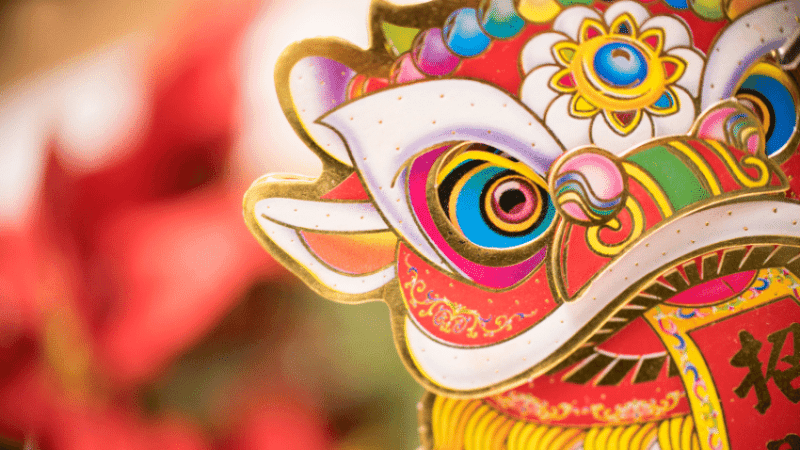What Laughter Does For Early Language

How do babies begin to learn to communicate with their carers? It’s a funny business, says Dr Caspar Addyman

Peek-a-boo is the most popular way to make a baby laugh across the world, and peek-a-boo is a conversation, pure and simple.
In the Navajo culture, a baby’s first laugh is an important landmark. It marks the baby’s full arrival in this world and is celebrated with a large party. It is an honour to be the person who made the baby laugh. Part of that honour involves being responsible for organising the baby’s laughter party. There, the parents and the person who made the baby laugh help the baby give out gifts to attendees to symbolically train the baby in generosity and welcome them into the community.
As someone who studies infant laughter scientifically (babylaughter.net), I’m a huge fan of this tradition. The Navajo know that laughter is about connection and communication, and that it can cross generational divides. What they might not appreciate is that laughter helps babies learn about the world and is an important part of how they learn language.
First laughs
The Navajo expect babies’ first laughs to happen around three months. In a worldwide survey of 1,300 parents, I found the average age of the first laugh was 3.5 months. Laughter can happen earlier than this but for very young babies it is light and breathy. They lack the muscle control to produce the sharp explosions of breath that are characteristic of laughter. And it will be even longer before they have control of the lungs, tongue and lips that are needed for speech.
This is also long before babies will solve the other big problems of speech, in mapping sounds to words and words to concepts. But relevant learning is happening from day one, and laughter and strong positive emotions are a hugely important part of the process.
In truth, learning starts before day one. Babies are born familiar with the basic sounds and rhythms of their own language – and even their mother’s voice – just from what they have heard in the womb. But it’s after birth that the learning takes off. Babies learn language better than adults. They are born capable of learning any language on the planet fluently and without accent. They will happily learn two or three languages simultaneously. They pick up the basics remarkably fast.
Happy sounds
We don’t use mumbling monotone when we speak to babies; we adopt a very positive sing-song tone. This used to be called motherese or parentese but nowadays psycholinguists prefer the term infant-directed speech (IDS) to reflect the fact that it’s not just parents who do it.
IDS is cross-cultural and serves two important purposes. A study which looked at IDS in several different languages found that speaking in this way made it easier for babies to discriminate the differences between vowel sounds. Other research found that when IDS has the acoustic features of happy adult-directed speech, “what is special is the widespread expression of emotion to infants in comparison with the more inhibited expression of emotion in typical adult interactions”.
They think what is important is that IDS sounds happy. A pilot study of my own provides tentative support for this. A researcher and a parent sat opposite a child and took turns to have either a laughing or a yawning interaction. The infants stayed more focused on the laughing partner, whether that was their parent or the researcher.
Conversation starters
Preverbal infants also use laughter to start a conversation. A study of laughter patterns between mothers and infants (from four weeks to 104 weeks of age) during 5–l0-minute play sessions in a laboratory found that in the first year of life, the infants’ laughter initiated interactions 198 times compared to just 45 where the mother laughed first.
During the second year, there were slightly fewer instances of the infant laughing first (176), more where the mother laughed first (73) and an increase in simultaneous onset laughs (17). Another delightful study which eavesdropped on the proto-speech of 3–4-month-old infants found that infants expressed a full range of emotions in their squeals, growls and gurgles.
Language is learned in conversations, and those conversations are more likely to be sustained if there is a strong positive emotional tone. Don’t forget that proto-conversations start between mothers and their newborns; nursing mothers wait for pauses in their infants’ actions to talk to them.
A recent study found that premature babies in intensive care make more vocalisations in response to hearing adults’ speech. If adults stop responding, infants notice and also cease. Testing five-month-old infants with this procedure also found that the infants ceased vocalising. Moreover, how in tune these infants were to their caregiver’s behaviour at five months predicted language comprehension at 13 months.
But what’s often overlooked in these studies is the emotional content of these pre-verbal ‘conversations’. My survey of laughter found that the game of peek-a-boo is the most popular and effective way to make a baby laugh across the world, and that peek-a-boo is a conversation, pure and simple.
It only works if you are attending to and taking turns with the baby. When you do, they are delighted and laughter is their contribution to the conversation. At least that’s the hypothesis; we are continuing to test it.
Important interactions
Laughter and strong positive emotion are often ignored by scientists because they are spontaneous and hard to capture in the laboratory. Technology is starting to solve these problems but in the interim, I’ve been gaining inspiration from more anecdotal sources.
As part of my Baby Laughter project, I’ve asked parents to contribute videos of things that made their babies laugh. Not surprisingly this is usually interactions with other people.
I see a lot of this neatly summarised in this video of four-month-old Frederick seeing himself in the mirror for the first time.
At four months old he’s far too young to know that the charming stranger is himself! But he’s aware that there is something strange about this individual. This partner breaks the conventions of conversation.
Unlike every other interaction he has ever had, the baby in the mirror isn’t taking turns with him but is in disconcerting synchrony with him. On this occasion, the oddness prompts Frederick to laugh. Although it could easily have gone the other way as many other videos of babies crying at their reflection can attest.
As an adult arriving in a foreign country, often all we can do is smile and laugh to communicate. This is usually enough to get us started; the same is true for babies. Early language development puts a lot of emphasis on a baby’s need to talk about things. But I think the importance of laughter and emotion in early communication should remind us that more important is talking to people. That laughing Navajo baby hasn’t just joined the community – she has joined the conversation.
Dr Caspar Addyman is a psychology lecturer at Goldsmiths, University of London, and a developmental psychologist interested in learning, laughter and behaviour change. His book, The Laughing Baby, is a scientific survey of the first two years of life. Dr Addyman presented his research at the National Literacy Trust’s Talk To Your Baby 2017 conference. You can express an interest in attending the 2018 conference at literacytrust.org.uk/ttyb.








